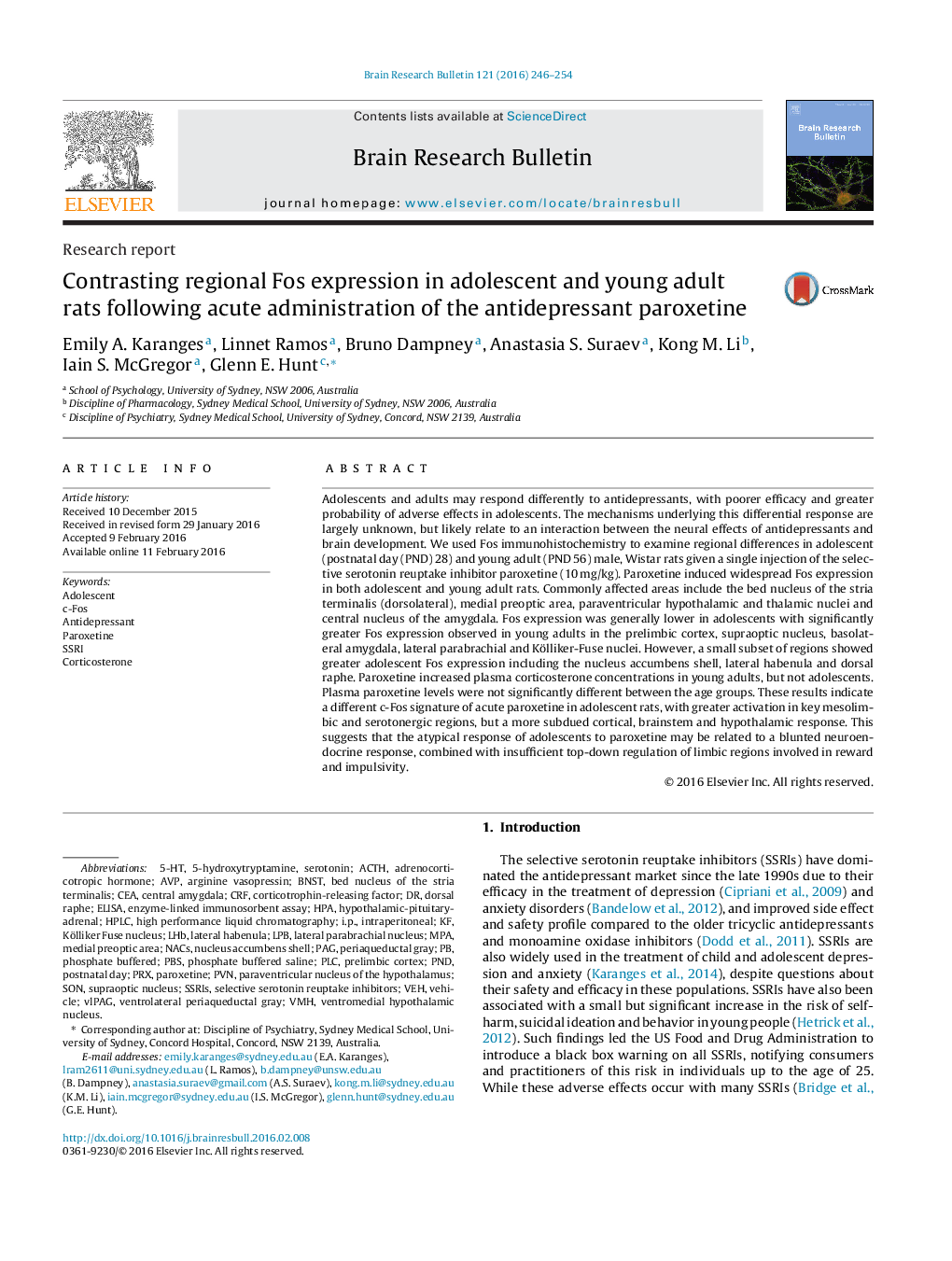| Article ID | Journal | Published Year | Pages | File Type |
|---|---|---|---|---|
| 4318660 | Brain Research Bulletin | 2016 | 9 Pages |
•Paroxetine induced different patterns of Fos expression in adult and adolescent rats.•In young adults, more Fos was expressed in the prelimbic cortex and brain stem.•In adolescents, more Fos was expressed in serotonergic and dopaminergic regions.•After paroxetine, corticosterone levels were higher only in young adult rats.•Plasma paroxetine levels were not significantly different between age groups.
Adolescents and adults may respond differently to antidepressants, with poorer efficacy and greater probability of adverse effects in adolescents. The mechanisms underlying this differential response are largely unknown, but likely relate to an interaction between the neural effects of antidepressants and brain development. We used Fos immunohistochemistry to examine regional differences in adolescent (postnatal day (PND) 28) and young adult (PND 56) male, Wistar rats given a single injection of the selective serotonin reuptake inhibitor paroxetine (10 mg/kg). Paroxetine induced widespread Fos expression in both adolescent and young adult rats. Commonly affected areas include the bed nucleus of the stria terminalis (dorsolateral), medial preoptic area, paraventricular hypothalamic and thalamic nuclei and central nucleus of the amygdala. Fos expression was generally lower in adolescents with significantly greater Fos expression observed in young adults in the prelimbic cortex, supraoptic nucleus, basolateral amygdala, lateral parabrachial and Kölliker-Fuse nuclei. However, a small subset of regions showed greater adolescent Fos expression including the nucleus accumbens shell, lateral habenula and dorsal raphe. Paroxetine increased plasma corticosterone concentrations in young adults, but not adolescents. Plasma paroxetine levels were not significantly different between the age groups. These results indicate a different c-Fos signature of acute paroxetine in adolescent rats, with greater activation in key mesolimbic and serotonergic regions, but a more subdued cortical, brainstem and hypothalamic response. This suggests that the atypical response of adolescents to paroxetine may be related to a blunted neuroendocrine response, combined with insufficient top-down regulation of limbic regions involved in reward and impulsivity.
